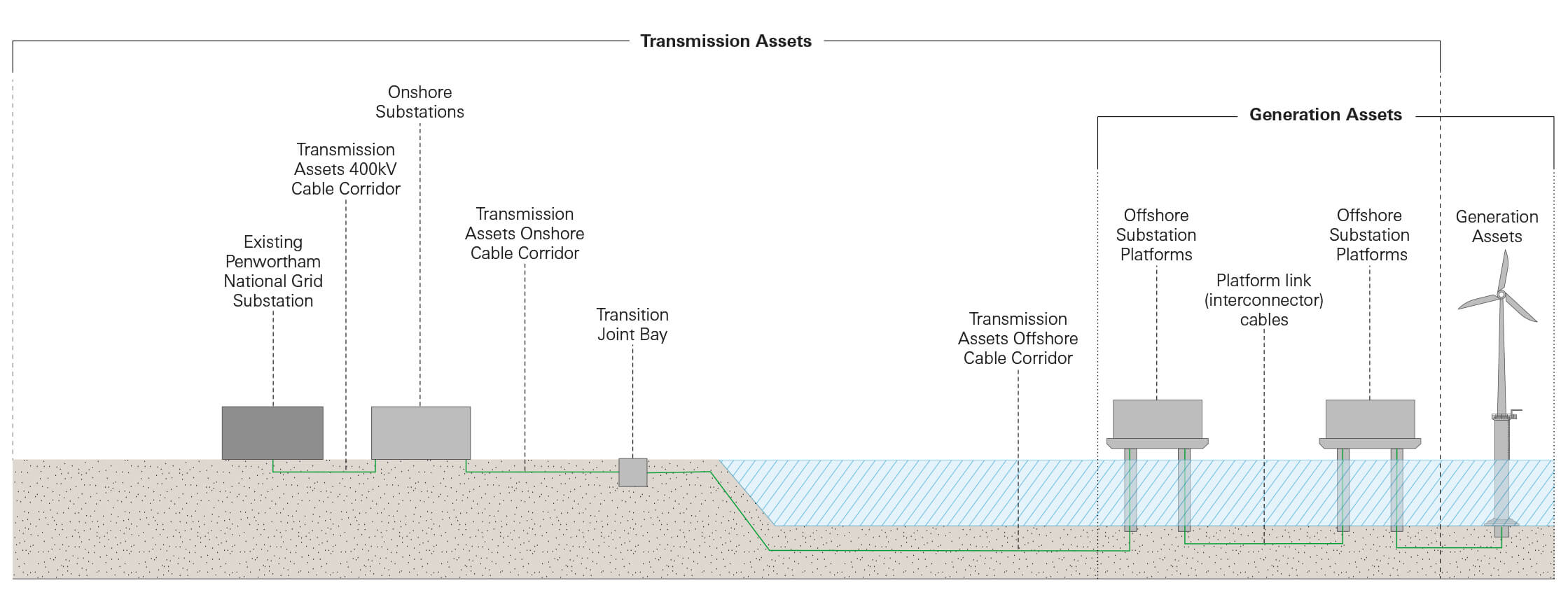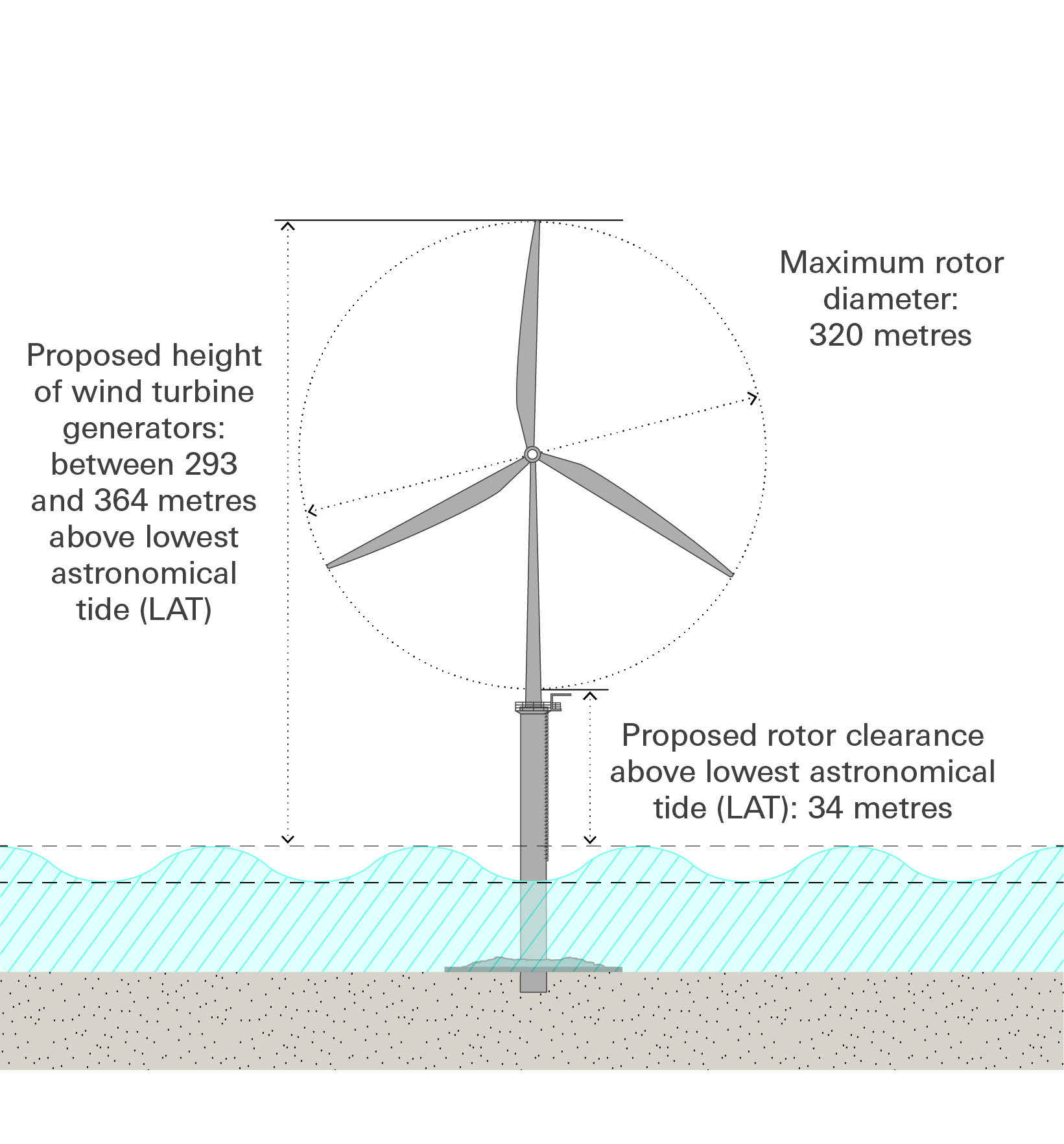Construction
Wind turbines
We are proposing to use three-bladed wind turbine generators (similar to those pictured). These will include the following elements:
- Rotors, including blades and a hub (which connects the blades to the shaft and drive train).
- Nacelle (which houses the electrical generator, control electronics and drive system).
- Structural support, which includes a tubular steel tower on top of a foundation structure.
The layout and design of the wind farm
The exact layout of the wind turbine generators is still being developed and would not be finalised until after the project is granted a positive consent decision by the Secretary of State for the Department of Energy Security and Net Zero.
Wind turbine generators will be set out in rows. In-row spacing (the space between each individual wind turbine generator in a row) will be a minimum of 875 metres (or 0.54 miles). Inter-row spacing (the space between each row of wind turbine generators) will be a minimum of 1000 metres (or 0.62 miles).
There may be empty spaces within the wind farm site. This may be due to certain less favourable seabed conditions or, for example, because we need to keep away from existing infrastructure.

The components of the Morgan Offshore Wind Project
Online webinar event
Watch the recording of our online consultation event, broadcast on 3 May 2023
Watch recording
| Fast facts: wind turbine generators | |||||||||||
|---|---|---|---|---|---|---|---|---|---|---|---|
This information is based on current understanding and may be refined once consultation has closed and ahead of submitting our DCO application. These numbers are assuming the generation of 1,500 megawatts of electricity.
|
|
||||||||||
| Fast facts: offshore substation platforms (OSPs) | |||||||||||
|
|
||||||||||
| Fast facts: Inter-array cables | |||||||||||
These are installed to connect individual wind turbine generators and also connect wind turbine generators to OSPs.
|
|
||||||||||
| Fast facts: inter-connector cables | |||||||||||
Should the project require up to four OSPs, inter-connector cables will be needed to connect each OSP and enable the transfer. They would also ensure that electricity transmission can continue should one cable fail.
|
|
||||||||||